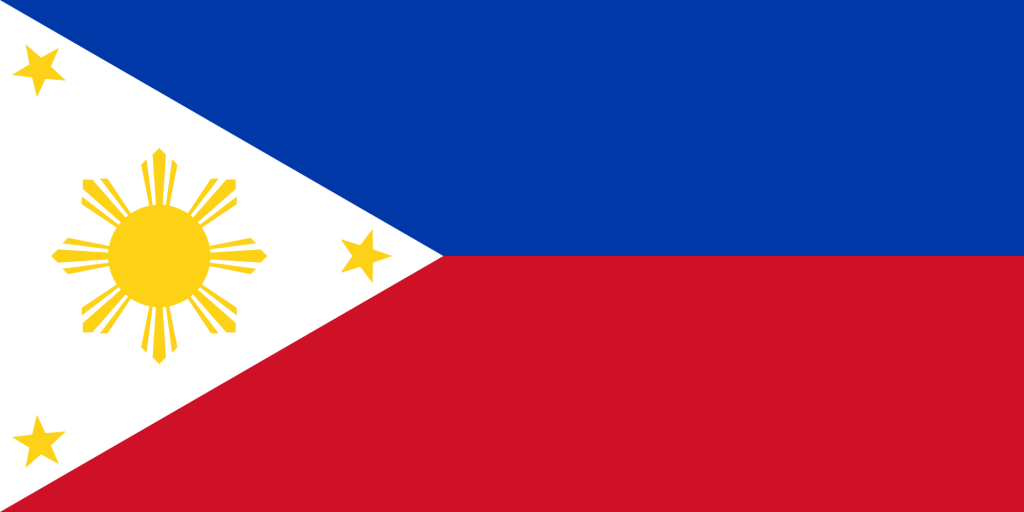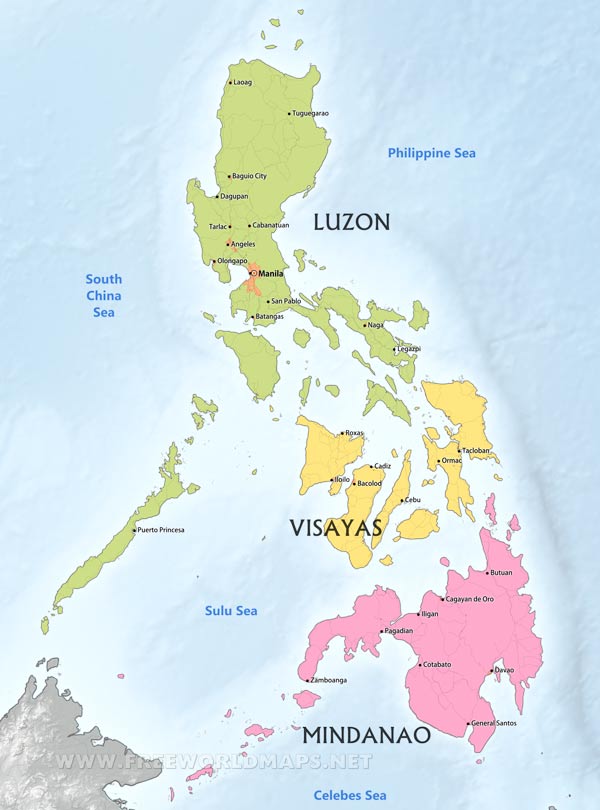
Country info

The Philippines is an archipelagic country consisting of 7,641 islands. The country is divided into three main islands, Luzon (Northern part), Visayas (Central part), and Mindanao (Southern part). The total population of the Philippines is approximately 108, 656, 000 million and most of the citizens are concentrated in the main cities of the country. According to the Philippine Statistic Authority, it is reported that there are 44.5 million people who are a part of the labor force. During the colonial era, the Philippines was occupied by Spain for 300 years (1565-1898). After this, the U.S. entered the Philippines and remained for about 48 years (1898-1946). It is due to the occupation of both Spain and the U.S., that Filipinos, although located in Asia, tend to have Spanish names and can speak fluent English. The uniqueness of the Philippines lies in the fact that they are the only country in Asia that has high levels of English proficiency and can be hired at a low cost (Emerhub 2018). When looking to hire in the Philippines, it is important to first look at the labor laws of the country. Labor laws are similar to those in Europe meaning four weeks paid vacation plus 13 days of public holidays (Emerhub 2018). Listed below are the key points of the Labor Code from the Bureau of Labor Relations.
Labor code
- The minimum age of employment is 18 years old.
- The minimum wage rate varies from region to region and must be followed by all employers.
- Regular work hours must not exceed more than eight (8) hours a day with no less than sixty (60) minutes time-off for regular meals.
- If a worker is required to work a sixth (6) day or to work for forty-eight (48) hours, they must receive compensation of at least thirty percent (30%) of their regular wage.
- All employees have a right of twenty-four (24) hours rest period after every 6 days of work
- Night Shifts start at 10:00 p.m. until 6:00 a.m., and all employees will be paid an additional ten percent (10%) of their regular wage.
On top of the labor laws, Filipinos expect a 13th-month bonus that is usually paid out in December (Shield Geo 2019).
Recruitment

Since the country is divided into three main islands (Luzon, Visayas, and Mindanao), the easiest way to recruit people in particular areas of the country is to go through the main city of each main island. The main cities are Manila, Cebu, and Davao, respectively. There are 2 main processes to hire in the Philippines. The first is to establish a company in the Philippines and hire through normal procedures. The second is to use an employer of record. An employer of record (EoR) is a service provider that hires employees who will be on their payroll but work for other companies (Emerhub 2018). EoR acts as a third party that hires employees on behalf of international companies. EoR deals with complicated local laws while releasing the primary company from any liabilities.
If you choose the first method and have already established a legal entity in the Philippines, the best way to look for new hires is online. One of the largest marketplaces for part-time and full-time employees can be found in a virtual job board called OnlineJobs (Bamboo HR 2019). There are other virtual job boards like Upwork that specialize in freelance hiring and local job boards including Pinoy Jobs and Job Street (Bamboo HR 2019).
The Recruitment Process in the Philippines involves a few steps:
- Application
- Initial Interview
- Testing Phase
- Final Interview
- Reference check
Application Phase
During the application phase, 2 required documents must be requested from the applicant: the National Bureau of Investigations (NBI) clearance and the Social Security System (SSS) ID. The NBI clearance is an official assurance that the applicant has no criminal case filed in the Philippines while the SSS ID is the applicant’s social security card (Coin.ph. 2019).
The Initial Interview
The HR team almost always does the first interview. During the initial interview, resume clarifications, related skills, work history, educational background, and expected pay are the main topics of discussions. It is during this stage where pay negotiations can occur.
Testing Phase
Following the initial interview is the skill-testing phase. Tests provided by the HR team are all standardized tests that measure specific skill levels being sought out by the company and/or required for the position.
Final Interview
The third hiring process is a final interview with the hiring manager. At this point, the hiring manager will test the applicant’s fit to the company, as well as offer the applicant a final chance to impress the hiring manager by selling themselves.
Reference Check
Reference checks are mandatory to have for every applicant. According to Jobstreet Philippines, it is common practice to have a minimum of 3 references for every applicant.
Selection
Choosing the right candidate for the job can be quite daunting in the Philippines.
Due to the competitive nature of finding
a good job in a third-world country, organizations must hire right the first
time. Employee termination in the Philippines is complicated and the official
courts naturally side with the terminated employee, this makes the selection
process very important and extensive in the Philippines (KC Global 2019). The
key factors that should be taken into consideration when hiring new employees
are work experience, applicable skills, applicant attitude, and proper
reference checks. Transferable experience and skills help minimize training
time and costs. Reference checks are essential in the Philippines to check for
any fraud or negative references. Unlike North America where it is stated by
law that no employer can hinder an applicant from acquiring a new job through a
negative reference, such a law does not exist in the Philippines, which allows
previous employers to speak truthfully when giving out a reference check.
Miscellaneous
There is an informal hiring system called the “Backer” system that simply ignores all of these hiring processes when applying for a job. This system relies on having a “connection” or a known person who is already working within the company that is willing to back your application up. To get promoted to higher positions within a company, it is essential that a worker has multiple backers.

References
BambooHR 2019. How and Where to Hire the Best Remote Workers for Your Business – BambooHR Blog. Available at: https://www.bamboohr.com/blog/hire-best-remote-workers/ [Accessed November 8, 2019].
Bureau of Labor Relations. Labor Code of the Philippines. Available at: https://blr.dole.gov.ph/2014/12/11/labor-code-of-the-philippines/ [Accessed November 8, 2019].
Coins.ph. 2019. How to Apply for Your NBI Clearance Online in 2019 (with Photos). Available at: https://coins.ph/blog/how-to-apply-for-nbi-clearance-online/ [Accessed November 9, 2019].
Coins.ph. 2019. SSS Online Application: How to Get Your SSS ID Online (2019). Available at: https://coins.ph/blog/sss-online-application-guide/ [Accessed November 9, 2019].
Emerhub 2018. How to Hire in the Philippines?. Available at: https://emerhub.com/philippines/hire-in-the-philippines/ [Accessed November 8, 2019].
Emerhub, 2018. Using Employer of Record Service For International Expansion. Available at: https://emerhub.com/insights/employer-of-record/ [Accessed November 8, 2019].
Jobstreet Philippines, 2018. Choosing the right character references for job application. Available at: https://www.jobstreet.com.ph/career-resources/choosing-right-character-references-job-application#.Xcuu_DJKj4M [Accessed November 8, 2019].
KC Global Talent Solutions, 2019. Terminating, Termination of Employment in the Philippines. Available at: https://kcrecruitment.com/hr-consulting/labor-and-employment/termination-of-employment/ [Accessed November 9, 2019].
Philippine Statistics Authority. Available at: https://psa.gov.ph/tags/labor-and-employment [Accessed November 8, 2019].
Shield GEO, 2018. Looking to Hire an Employee in Philippines? . Available at: https://shieldgeo.com/looking-hire-employee-philippines/ [Accessed November 9, 2019].
Wordometers. Philippines Population (LIVE). Available at: https://www.worldometers.info/world-population/philippines-population/ [Accessed November 8, 2019].
